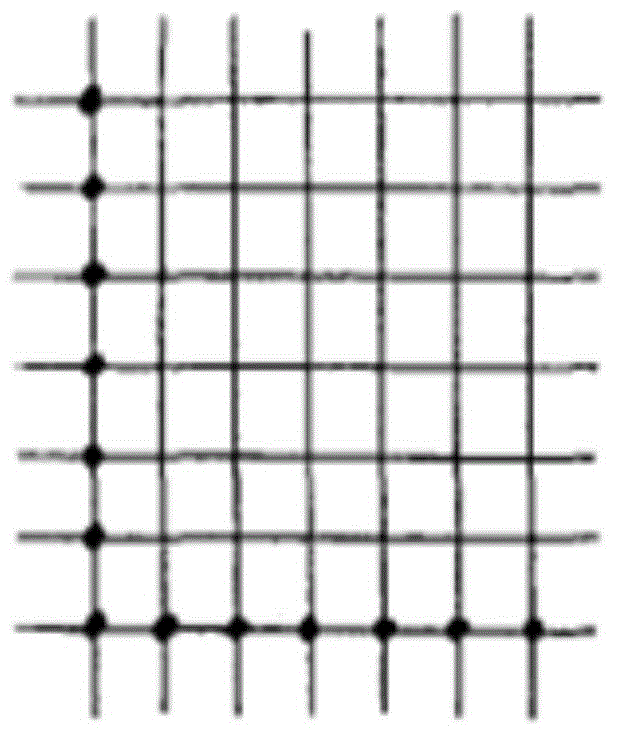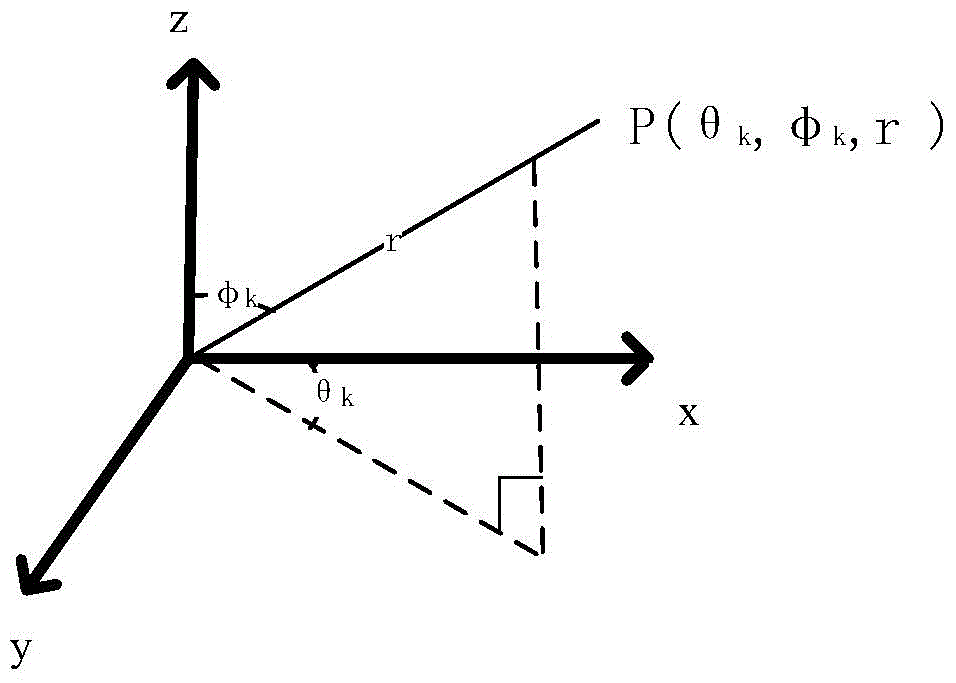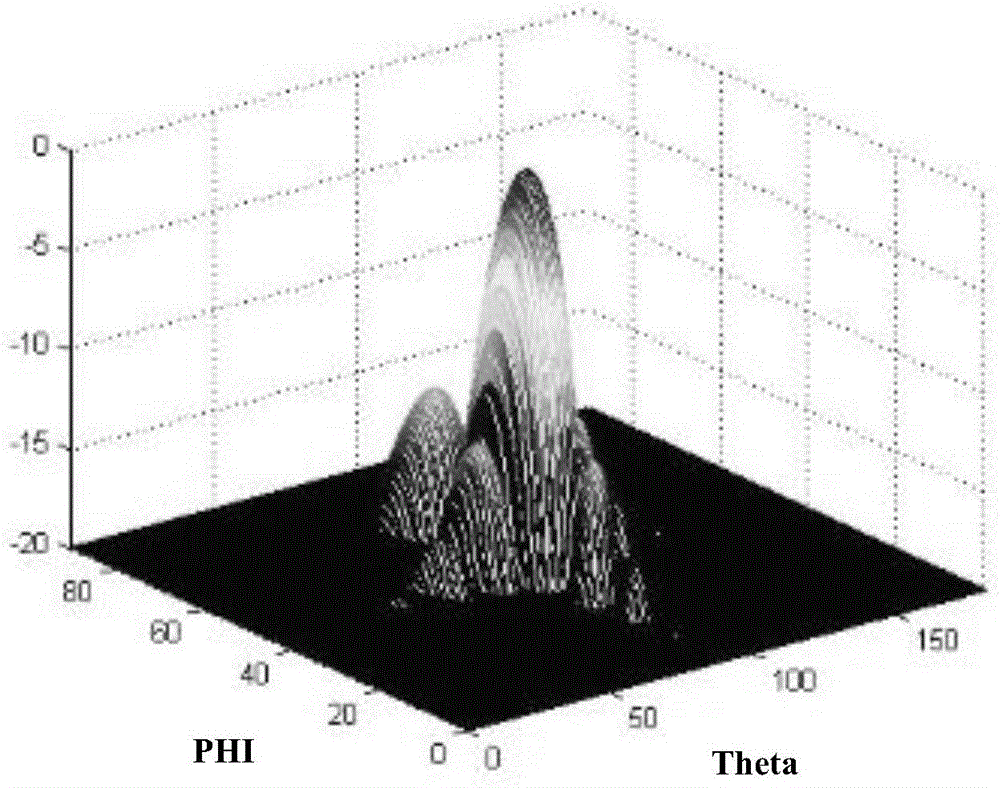Method for beam forming and beam pattern optimization based on L-shaped array antenna
An array antenna and optimization method technology, applied to antennas, antenna arrays, instruments, etc., can solve the problem of low angle measurement resolution and angle measurement accuracy of beam patterns, and achieve the effect of optimization of angle measurement resolution and angle measurement accuracy
- Summary
- Abstract
- Description
- Claims
- Application Information
AI Technical Summary
Problems solved by technology
Method used
Image
Examples
specific Embodiment approach 1
[0020] Specific embodiment one, a beamforming and beam pattern optimization method based on an L-shaped array antenna, comprising the following steps:
[0021] Step 1: The basic structure of the array obtained by removing the central part of the rectangular array and only retaining two array elements adjacent to the border is an L-shaped array, such as figure 1 As shown; establish a space Cartesian coordinate system xyz, assume that the antenna array exists in the plane formed by the xy axis, and the two array elements of the L-shaped array coincide with the x axis and the y axis respectively, and the space coordinate is P(θ k ,φ k , r) The included angles between an incident beam and the y and z axes are θ k , φ k ; θ k Named the pitch angle of the incident signal, φ k Named as the azimuth of the incident signal, r is the distance from the target to the origin, such as figure 2 shown;
[0022] Step 2: use the two-dimensional spatial beamforming method to establish the ...
specific Embodiment approach 2
[0031] Specific embodiment two, the calculation steps of the maximum caliber Da of the array in step 3 described in this embodiment are as follows:
[0032] For the L-shaped array of the J_K array, use the formula (2) to calculate the maximum array diameter of the x-axis and y-axis of the array respectively:
[0033] Da = N ( N - 1 ) 2 - N R - - - ( 2 )
[0034] In the formula: N=J or K, indicating the number of array elements on the x-axis or y-axis; N R Indicates the number of redundancy.
[0035] N R By looking up Table 1 to get
[0036] Table 1 N and N R Chart
[0037]
[0038] Other steps and parameters are the same as in the first embodiment.
specific Embodiment approach 3
[0039] Specific implementation mode three: the specific implementation steps for encoding and adjusting the array structure of the L-shaped array in step 3 described in this implementation mode are as follows:
[0040] Step 3.1: Encode against L-shaped array of J_K arrays:
[0041] Consider the L-shaped array as a chromosome. For the J_K array, when forming an individual's gene, the J_K array is represented by a binary string randomly generated by the J+K group. The number of bits in the binary number string is Na, and each binary The character string is called a gene on the chromosome; the meaning represented by each binary character string is the distance between the array element and the previous array element, and the above method is used to generate J+K genes, which are stored as the initial population of the genetic algorithm , use the genetic algorithm to perform genetic operations on the initial population;
[0042] Step 3.2: When performing genetic operations, adjust...
PUM
 Login to View More
Login to View More Abstract
Description
Claims
Application Information
 Login to View More
Login to View More - R&D
- Intellectual Property
- Life Sciences
- Materials
- Tech Scout
- Unparalleled Data Quality
- Higher Quality Content
- 60% Fewer Hallucinations
Browse by: Latest US Patents, China's latest patents, Technical Efficacy Thesaurus, Application Domain, Technology Topic, Popular Technical Reports.
© 2025 PatSnap. All rights reserved.Legal|Privacy policy|Modern Slavery Act Transparency Statement|Sitemap|About US| Contact US: help@patsnap.com



